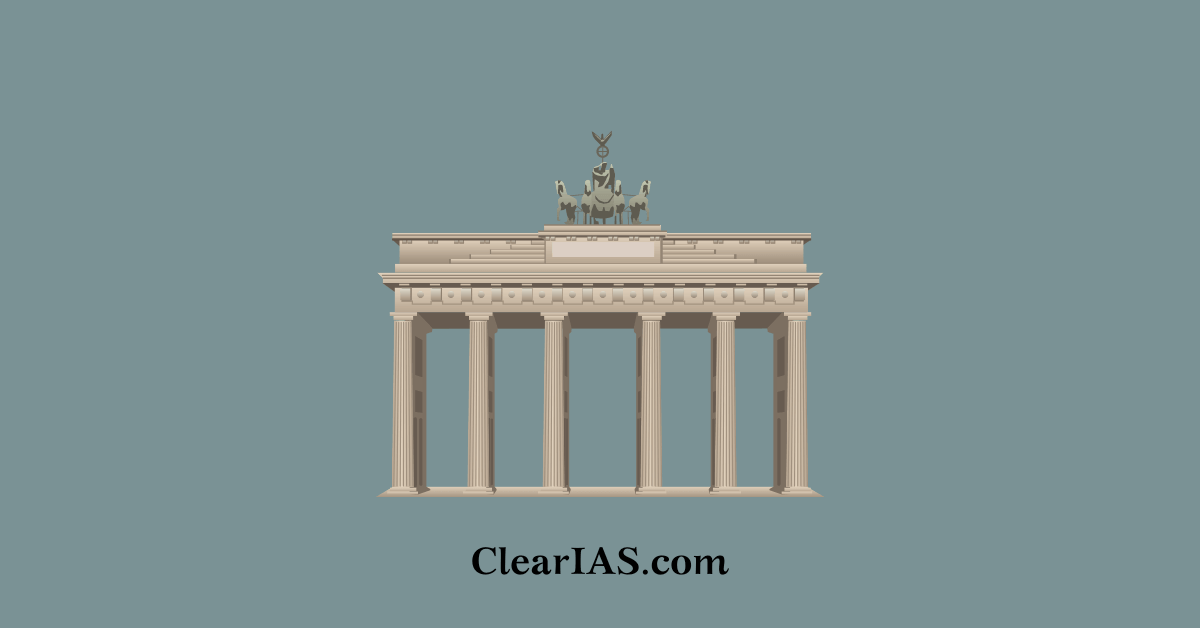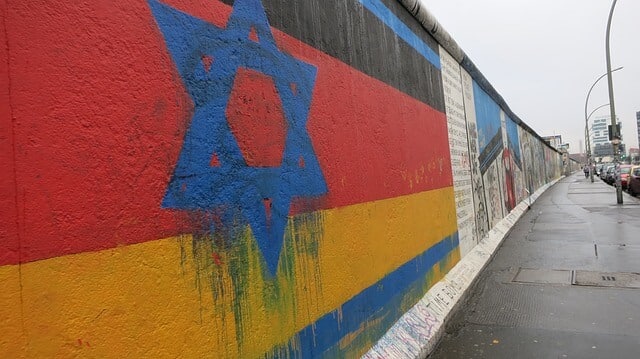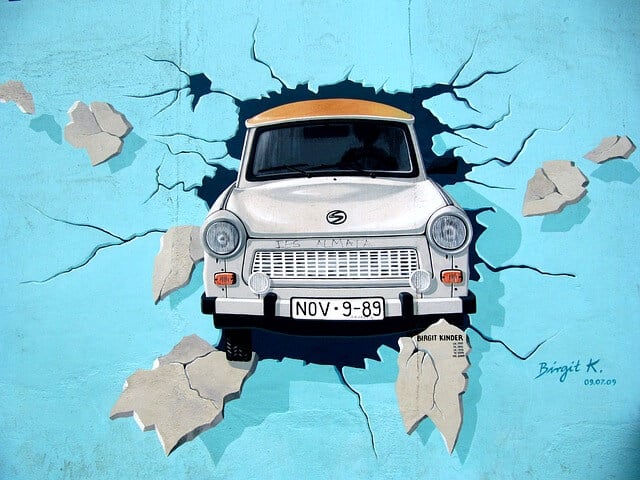
Berlin Wall: a symbol of division between East and the West

- Berlin Wall not only represented division between West Germany and East Germany, but also division between the East and the West as a whole.
- West = Democratic Capitalist Countries.
- East = Communist Regime.
- Also, that was the period of Cold War.
Why Berlin Wall?
The Berlin Wall was officially referred to as the “Anti-Fascist Protection Rampart” by GDR authorities, implying that the NATO countries and West Germany in particular were “fascists.” The West Berlin city government sometimes referred to it as the “Wall of Shame” while condemning the Wall’s restriction on freedom of movement.
Events which led to the Fall of Berlin

- The changes started in the mid-’80s when Soviet leader Mikhail Gorbachev started his policies of glasnost (openness) and perestroika (restructuring). This took away the threat of Soviet intervention in other socialist countries.
- The Polish communist regime was the first to collapse when it signed an agreement with the Solidarity movement and paved the way for free elections. By June 1989, the Polish people had elected their first non-communist head of government.
- Next was Hungary, where soldiers dismantled barbed wire and fencing along its borders with Austria. Hundreds of East Germans went to Hungary on a holiday and crossed over to Austria.
- In August, two million people in the Baltic republics of Estonia, Latvia and Lithuania formed a human chain against the Soviet rule.
- In October, during his visit to East Berlin, Gorbachev advised East German leader not to delay reforms. After days of mass protests, the East German government on November 9th declared that citizens were free to go the West.
- This led to thousand of East Germans moving into the West, and literally tearing off the wall.
Consequences of the Fall of Berlin

- Fall of Berlin led to further changes in other socialist countries, the unification of Germany, and finally the collapse of Soviet Union itself in 1991.
- Marked the end of Soviet supported authoritarian regimes in Eastern Europe.
- Immediately after these changes about 30 countries in the former Soviet Union and Central-Eastern Europe started their political and economic transition towards democracy and market economy.
- Liberal, capitalist and democratic system emerged as the major doctrine across the world.
- Some of these countries have become members of Western institutions and organizations like the European Union (EU), North Atlantic Treaty Organization (NATO) and Organization for Economic Cooperation and Development (OECD).
- In most of these countries, citizens enjoy higher living standards and broader political and personal rights.
- The majority of citizens in the former socialist countries do not want to go back to earlier economic and political system.
Was it all smooth and well under the market economy?
- While it was better governance and standard of life of many countries, for some others like the former Soviet Union and Yugoslavia, the process has been much more difficult as these changes also led to a break up of old nations into many new independent countries.
- The civil war in former Yugoslavia and Tajikistan in the 1990s and the current crisis in Ukraine shows that the process of change which started through peaceful revolutions in 1989 has not been truly peaceful.
- Moreover, a large number of vulnerable people in many of these countries also faced serious economic difficulties due to a steady decline of state support and subsidies.
- There are still significant differences between East and West Europe, even between East and West Germany.
Discrimination towards Eastern Europe countries
- The 1989 vision of partnering prosperous Europe didn’t realize all on a sudden. Economic decline throughout Eastern Europe in the 1990s and then long delays in getting the EU membership created tensions.
- Many Eastern Europeans thought that they will become members of the EU within a few years. The first group of countries was admitted to the EU only in 2004, almost 15 years of after the fall of Berlin wall.
- A few others like Bulgaria, Romania and Croatia joined later in 2006 and 2013 respectively.
- Countries like Albania and Serbia are still waiting.
Present situation in Europe: Euro-skepticism and rise of nationalism
When many countries joined the EU, they also committed to join the single currency whenever they are ready and fulfilled convergence criteria of low inflation, low interest rates, low fiscal deficit and stable exchange rate. A few smaller countries viz. Estonia, Latvia, Slovenia and Slovakia have even joined the Eurozone. However, crisis in some of the Eurozone countries in the last few years have made many others skeptical. When the EU itself is facing one of the biggest crises since its inception, the earlier assumption that deepening integration with the EU institutions would automatically mean rising living standards and social security may no longer be valid easily. Euro-Skepticism, once a British decease has now entered even in some former socialist countries. Hungarian Prime Minister Viktor Orban argues, however, that his country “is not Euro-Skeptic But “Euro-Realistic.” There is a talk of authoritarianism in a country which used to practice liberal “goulash socialism” even during the Soviet period. Moreover, nationalism is on the rise in many parts of Europe. Across the continent, nationalist parties or movements gaining ground in recent years.
Significance of NATO after the disintegration of USSR
The fall of the Berlin wall also coincided with the collapse of the USSR and end of the Cold War. Even in changed circumstances, NATO did not disappear. It found new justifications and adapted itself to new challenges. Many old Warsaw Pact countries also became its members.
But now when old super powers the US and Russia are threatening each other again, NATO has found a renewed sense of purpose. At the recent NATO summit in September, it declared that “Russia’s aggressive actions against Ukraine have fundamentally challenged our vision of a Europe whole, free, and at peace.” It also declared that the NATO “remains an essential source of stability in this unpredictable world”. So even 25 years after communism’s fall, NATO is still active even in European security.
Reference:
- IDSA – Fall of the Berlin Wall: Marking 25 years by Gulshan Sachdeva
- Wikipedia






Thanks for the article.
thanks for this article
restructuring and openness = Perestroika and Glasnost
Sir I want to know that If I am B sc. honors from physics .So I can give exam to upsc and what is qualification i.e 10 and 12 marks
Candidate should have a Bachelor’s degree from a recognised institute/university. Candidates who have appeared for final year’s examination of Bachelor’s degree or those who are yet to appear are also eligible for the UPSC IAS preliminary exam.
Thank u😀😀😀😀🇿🇼
Proudly 🇿🇼
History iit,♥️♥️♥️♥️♥️♥️♥️♥️♥️♥️♥️♥️♥️♥️ a lot my favourite subject